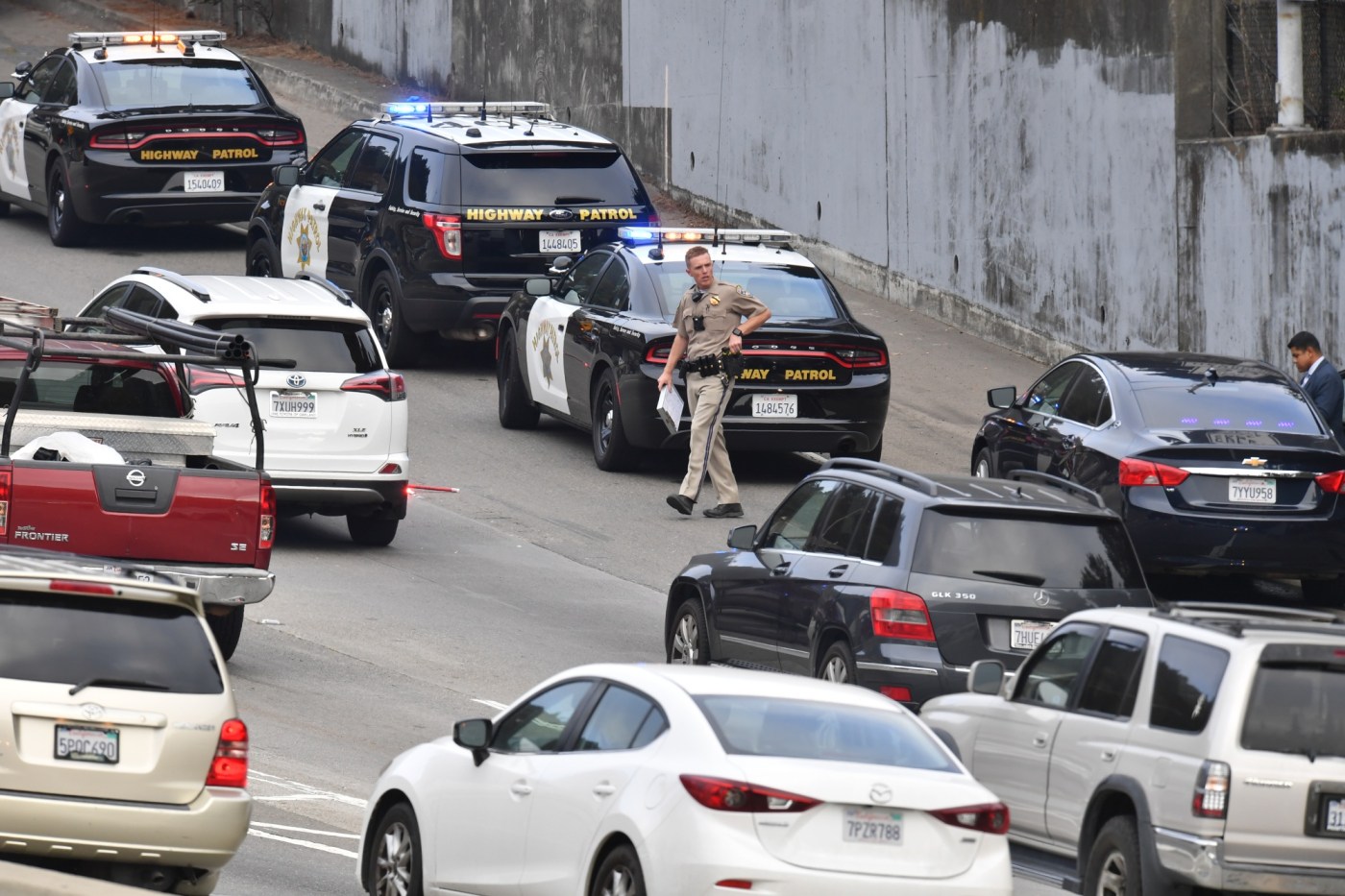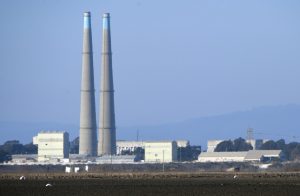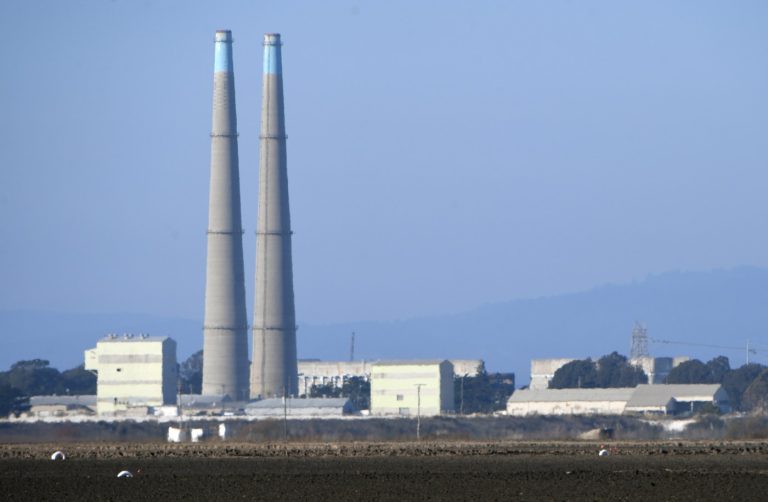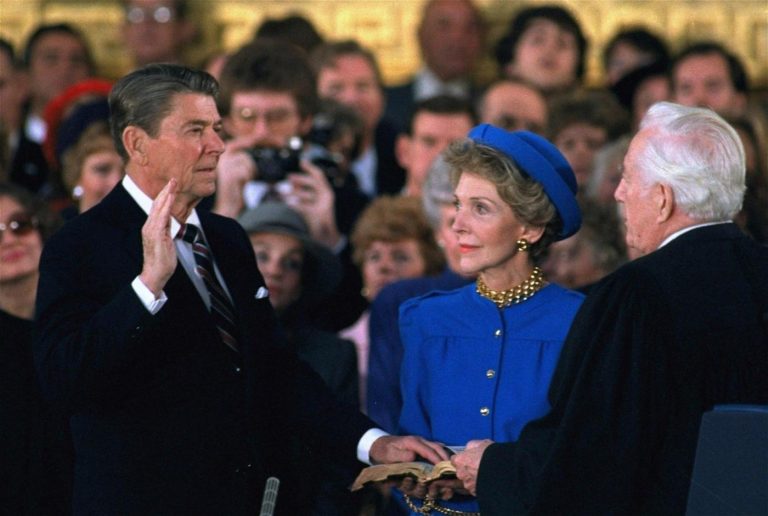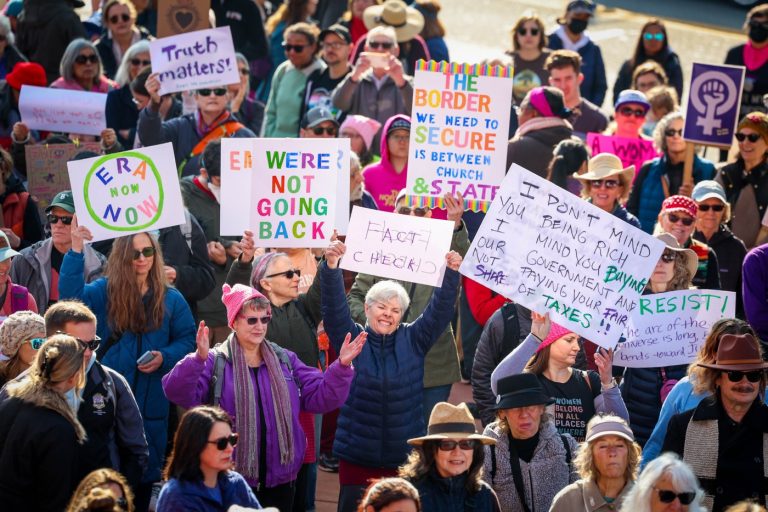More than once a week last year, bullets from rolling gunbattles, road rage-fueled shootings and seemingly unprovoked attacks flew on Alameda County freeways at a frequency far outpacing most of the state, according to an analysis of highway patrol data by this news organization.
Often, innocent motorists — and children — are caught in the cross fire. Sometimes, the shootings turn deadly. Rarely are they solved.
While encouraging signs abound elsewhere in the state, the scourge of freeway shootings remains persistent in the East Bay, where the problem in Alameda County appears to be just as bad, if not worse, than pandemic-era highs seen across the state a few years ago. The county had the same number of reported shootings — 217 — as the rest of the entire Golden Gate Division, covering the nine larger Bay Area counties, from 2021 to 2023, largely because shootings in Alameda County increased slightly over time, while the rest of the region saw reports of gunfire drop by more than half.
Alameda County has one-sixth the population of Los Angeles County, but has a freeway and highway shootings-per-capita rate five times higher since 2021, according to the data, which was provided by the California Highway Patrol to this newspaper in March. Last year, Alameda County surpassed L.A. for a first-place finish no one wants: 79 reported highway shootings, compared to 71 in L.A., a place known for being the capital of the nation’s car culture.
The East Bay “is the wild wild West right now — it’s full of guns, and the smallest inkling of a disagreement can result in a shooting,” said Glen Upshaw Sr., a violence interrupter with the Oakland-based nonprofit Youth Alive! “Ninety percent of the stories we hear are, ‘I don’t even know why he shot me.’”
Across the state, reports of shootings involving firearms — as opposed to BB guns, pellet guns and the like — last year dropped 27% from 2021, easing from 477 to 347, according to the analysis. Yet reports of shootings in Alameda County jumped to 79 in 2023, up from 66 and 72 the two previous years. The most dangerous highway was Interstate 580, particularly in Oakland and east of Dublin.
Few cases here are ever solved, despite state officials pouring millions into fighting the issue, with extra overtime for officers to patrol the region’s roadways and the planned implementation of an expansive network of cameras.
Authorities made arrests in just 13 of the 211 confirmed shootings that police investigated across the Bay Area in 2022 and 2023. That 6% arrest rate in those cases mirrored statewide trends, with CHP investigators finding meager success in solving freeway shooting cases, specifically in those two years.
“These shootings are notoriously hard to investigate,” said Michelle Rippy, a professor of criminal justice at California State University, East Bay. She specifically pointed to the fact that there are often fewer witnesses to freeway shootings; by their very nature, such incidents mean suspects and victims leave the scene almost instantly.
“What’s happening is we’re seeing these community gun violence issues also being dredged onto the highway,” Rippy added. “We almost need to turn to look at our community violence from a public health lens,” she said, emphasizing that freeway shootings are part of a larger issue of gun violence.
Related Articles
Antioch Police racist, homophobic text scandal draws protest and rally
Missing East Bay teen found dead in SF: ‘This poor child was abandoned,’ says family
Oakland police investigate fatal shooting in Coliseum neighborhood
Man arrested in East Bay attack on elderly shopper and police chief
Three arrested in connection with 11 East Bay robberies
The CHP made arrests in six of the 16 fatal shootings on Bay Area freeways from 2021 to 2023. That tally of deaths does not include incidents where officers suspect the violence happened off of freeways or highways, such as when a body is believed to be dumped on a roadway, or when someone is killed on state property beneath an overpass.
One of the first cases to go cold in recent years was the May 2021 killings of Alayasia Thurston, 19, and Zoey Hughes, 16, who were caught in a fusillade of bullets fired at a party bus as it traveled down Interstate 580 in Oakland. Five others were wounded, including the bus driver, who maneuvered the bus to safety despite being shot in the back.
For Zoey’s mother, Christina Hughes, the lack of accountability for that violence has been angering.
Hughes questioned whether the CHP — an agency that historically has chiefly focused on investigating crashes, not killings — was up to the task, suggesting that it’s “not equipped to be able to do any investigating on my daughter’s murder.”
“They’re not doing what they’re supposed to be doing,” Hughes added. The investigators do “not care – it’s too much for them. There’s too much going on, where do they even start?”
Capt. Jason Cavett, commander of the highway patrol’s field support division, acknowledged that shooting rates in Alameda County remain an issue, but said any attempts to nail down specific reasons for that problem amount to “speculation.”
Yet questions remain on the effectiveness of previous efforts to reign in freeway violence, including a $10.6 million statewide Highway Task Force funded through 2025 that was created to specifically curtail freeway shootings across the state. There was no marked increase in shootings being solved. In 2022 and 2023 freeway shooting cases, officers made arrests in only a few dozen shooting cases each year, according to data provided to this news organization on March 12.
Newsom’s office referred questions by this newspaper to the highway patrol. Cavett, however, stressed that “numbers don’t tell the whole picture.”
“We’re not judging our program, our enforcement or anything by numbers,” Cavet said. “Sometimes it takes a little longer than we may think it needs to take. We’re going to continue to focus where we need to be, where the stats say we need to be, continue to seek out new technologies that will help us in that task and do the best job we can.”
Criminologists say freeways appear to be the venue of choice for some people seeking to carry out retaliatory shootings, given how hard it can be for a targeted person to defend themselves while traveling 65 mph or faster down a roadway.
“Freeway shootings are opportunistic,” said Jon Simon, a criminal justice professor at UC Berkeley’s School of Law. “I’d strongly suggest there are people who are looking to retaliate against specific individuals, and they may have knowledge that allows them to anticipate that this person is going to be on 880, or on 580.”
The motives for most shootings remain unclear, with motorists sometimes only hearing a “pop” before discovering at home that their car had fresh bullet holes.
Last year, Alameda County’s highways averaged more than one shooting a week.
A two-week span of violence began last April when one bullet pierced into Eliyanah Crisostomo, killing the 5-year-old girl as her family traveled to a birthday party on Interstate 880 in Fremont.
Four days later, bullets tore through the pickup truck that Claudio Martinez, 34, was driving along Interstate 580 in Oakland, killing him. More gunfire on I-580 was detected the following week, a few miles west of where Martinez was shot, though no one was injured in that shooting.
In another troubling instance, someone fired at Caltrans contractors who had stopped traffic for a project in June 2023 on Interstate 80 in Berkeley.
Much of the Bay Area was seeing a drop in firearms violence on freeways and highways at that time. Across the highway patrol’s Golden Gate Division — which includes all or parts of all nine Bay Area counties — reported shootings dropped more than a quarter from 2021 to 2023, with 124 last year.
Kevin Grant, a trainer coordinator for Oakland’s Department of Violence Prevention, said he wants to see the California Highway Patrol be more creative as it works to curtail the gunfire on its roadways. He said the agency should embrace cooperating with local violence interrupters, to help better understand the people involved in certain shootings and to possibly even prevent future violent outbursts.
So far, though, he hasn’t seen the agency utilize that approach to its fullest extent — making for a missed opportunity.
“We just need to throw more resources at it,” Grant said.
